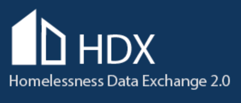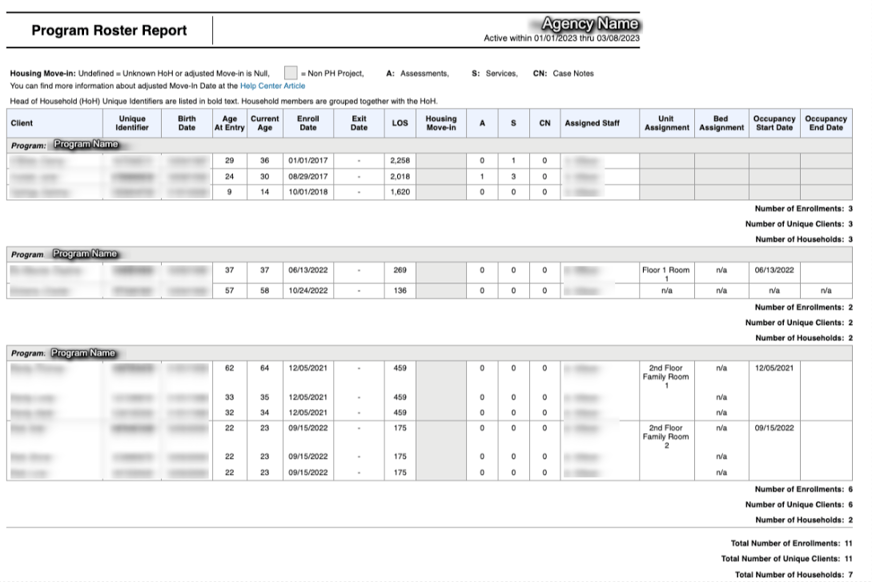

We are excited to announce that the 2026 HUD HMIS Data Standards updates are now live and available in your instance! You’ll find updated fillable intake forms on the Napa Bitfocus website under the Forms tab here.
For more information, checkout our 2026 Data Standards central hub, the October 2025 Feature Updates article, and this local one-pager. Please contact us at napa@bitfocus.com if you have any questions – or if something in your system doesn’t seem correct.
We appreciate your ongoing partnership and patience during this time!

The upcoming federal reporting season is approaching! Preparation for two of HUD’s major CoC reports will start soon: the Longitudinal Systems Analysis (LSA) and System Performance Measures (SPM).
HUD’s Longitudinal Systems Analysis (LSA) is a report submitted to HUD annually that includes a complex analysis across key projects participating in the Continuum of Care (CoC) Homelessness Management Information System (HMIS). The LSA replaced the Annual Homeless Assessment Report’s (AHAR) data component in the 2018 reporting year.
HUD’s System Performance Measures (SPM) focus on evaluating local homeless responses as a coordinated system of homeless assistance options. This data is reported to HUD annually and includes key indicators of a high performing system including length of time homeless, exits to permanent housing, returns to homelessness, and more.
The Bitfocus team may reach out to verify or correct data about your program and/or clients. Please look out for those emails and respond promptly. We truly appreciate all of the hard work your community does to maintain data that is complete, accurate, and timely!
You can review the data by doing the following:
1. Run the [HUDX-225] HMIS Data Quality Report for the period 10/1/24 to 9/30/25 (you'll find this report in the Clarity Human Services Report Library under HUD Reports). Correct records with errors, paying special attention to any element that shows over a 5% error rate (remember, clicking on a number will give you a list of clients being counted in that number). Want more information on what gets counted in this report? Check out our Help Center article: [HUDX-225] HMIS Data Quality Report
2. Run the [GNRL-106] Program Roster for the period 10/1/24 to 9/30/25 (this report is under Program Based Reports) and make sure household groups are correct (households are separated by bold lines. Clients not separated by lines are grouped together in a household). If clients are grouped together incorrectly, contact the Helpdesk to get them corrected. Some measures only count heads of household, so it's important that households be configured correctly! Check out our Help Center article: [GNRL-106] Program Roster
3. Run the [GNRL-220] Program Details Report for the period 10/1/24 to 9/30/25 (this report is under Program Based Reports) and review the following:
Thanks in advance for your partnership in making sure that our community’s data is as accurate as possible.
The best people to review the data are program managers and key staff who work in the programs. There is overlap with the LSA and SPM timeline and relevant data. Your work on this will benefit both reports, and more broadly, your CoC.

We’re rolling out several updates to Clarity, focusing on enhancing the Coordinated Entry (CE) process through the new user interface. Our November Feature Release—primarily available on the new interface—is designed to streamline common workflows for assessors, matchmakers, and providers, helping you save time and enhance data quality across your homelessness response system.
One key update to highlight in this release is the Default Login for New Clarity Interface Users. On November 18th, 2025, users who have the new Clarity interface enabled will now be automatically directed to the new interface, allowing them to bypass manually switching from the classic Clarity interface. Users will still have the option to navigate back to the current interface by clicking on the pop-out icon (![]() ) at the top right of their screen - or disable the new interface altogether.
) at the top right of their screen - or disable the new interface altogether.
Users with Access to New Clarity Interface enabled will now land directly on the new interface after logging in. A navigation option remains available if you prefer to switch back to the current interface. To improve workflow and efficiency within the new interface, Column Selectors have been introduced across various screens. These allow staff to more easily customize how you view information by selecting, collapsing, and rearranging fields. These personalized column selections are saved in the user's browser, ensuring the preferred view remains the same each time you login.
All agency referral activities are now centralized under a New! Global Referrals Tab accessible from the main navigation menu. This new hub provides dedicated, consolidated pages for viewing and managing incoming referrals and navigating the Community Queue. By centralizing this information, users can more effectively triage and prioritize clients in a single location, rather than across multiple pages and client records.
The process of connecting clients to services has been streamlined with new functionality focused on eligibility and direct placement. This includes a New! Program Eligibility Determination Screen that allows staff to quickly assess a client's eligibility for various programs. Users can now make New! Referrals to Programs directly, or send New! Referrals to Community Queue from Eligibility Determination, creating a more efficient path for client entry. Further enhancements include new capabilities for Editing Referrals, viewing a comprehensive Referral History, and establishing Referral Connections to better track and document accepted program enrollments.
The [GNRL-106] Program Roster is a program-based report that gives you a list of clients, their program enrollment status, and any housing details for the programs you choose. This report can help you identify the number of clients and/or households enrolled during a specific period, whether they’ve had multiple enrollments in your program, and allows you to quickly review client information. If you run this report for a housing program, it will also provide details on who has a bed or unit assignment in your program.
The following parameters are available to obtain targeted details in the [GNRL-106] Program Roster Report:
Note: Selecting PDF - Program will exclude all Inventory (Unit/Bed) information. All other Report Output Formats include Inventory information columns.

This report is designed to provide an overview of program stay information for all active, enrolled, or exited clients.
This report provides information for the following data elements:
The table is sorted by Length of Stay and grouped by Enrollment Household, and separated by Program.
Head of Household (HoH) Unique Identifiers are listed in bold text and Household members are grouped together with the HoH.

Monthly CoC meeting run by Napa County on the first Thursday of every month. After registering, you will receive a confirmation email containing information about joining the meeting.



napa@bitfocus.com or 888-505-1832
© 2003-2025 Bitfocus, Inc | All Rights Reserved